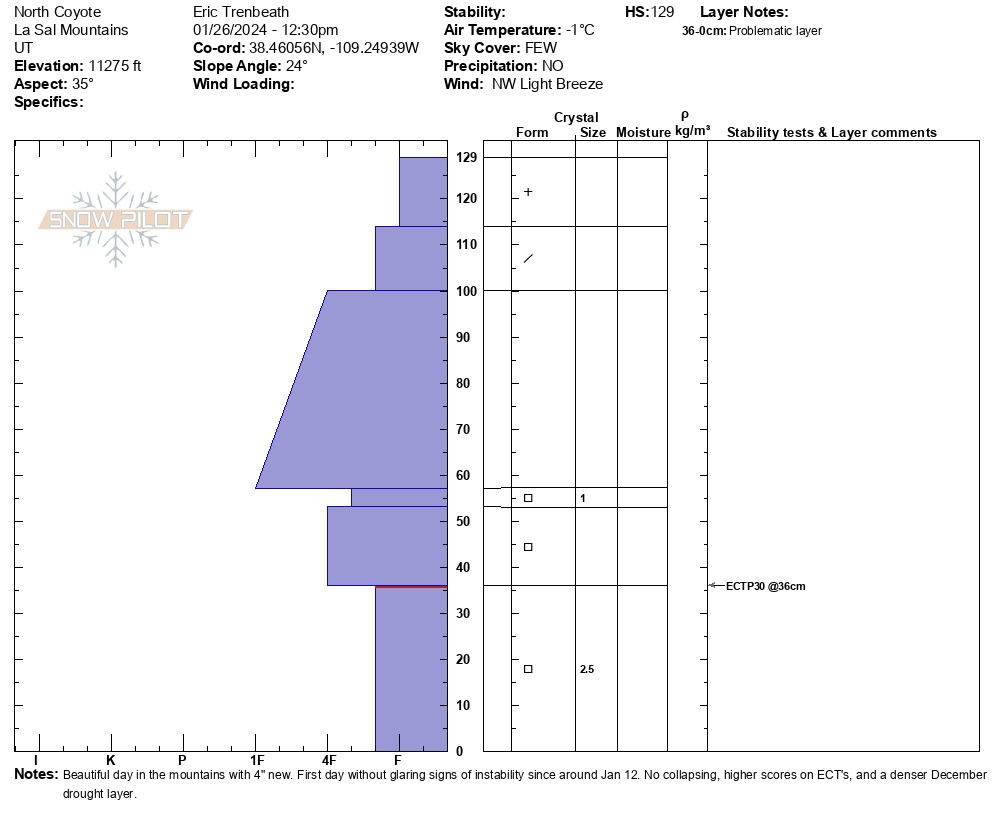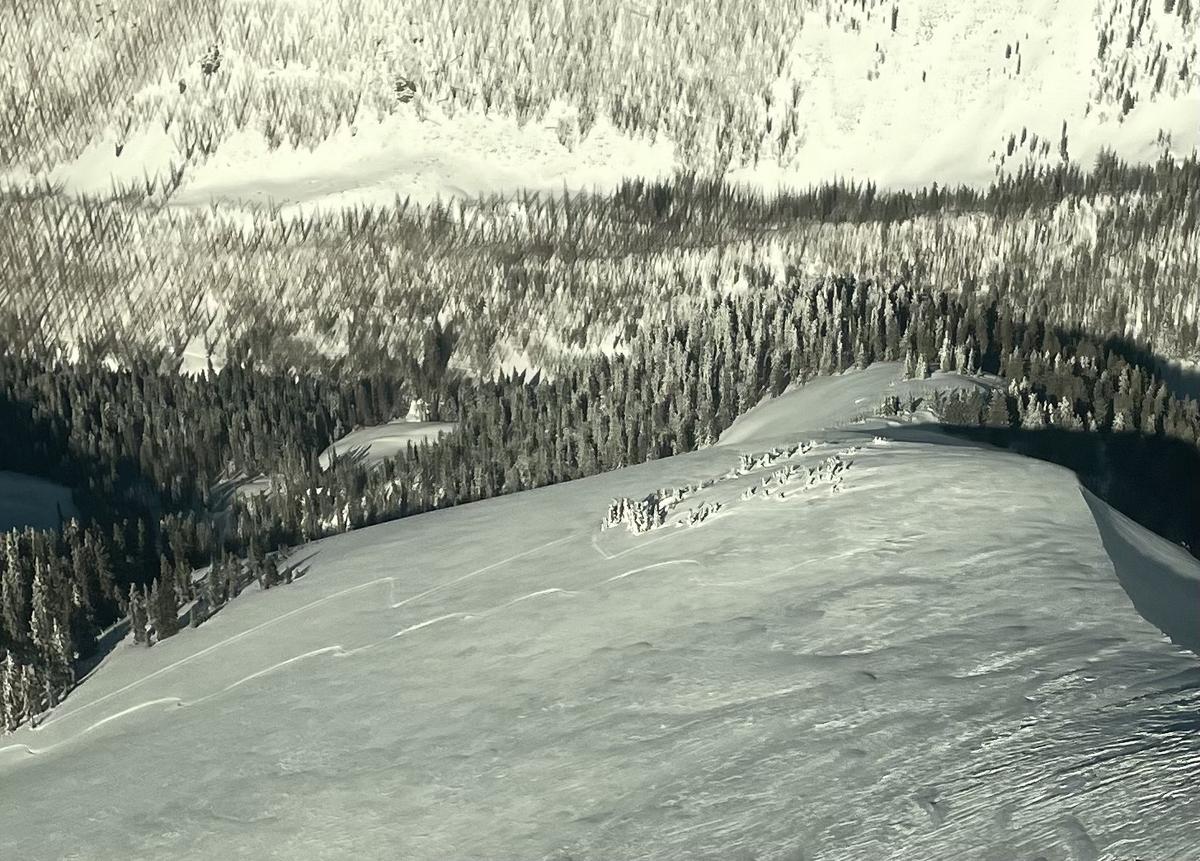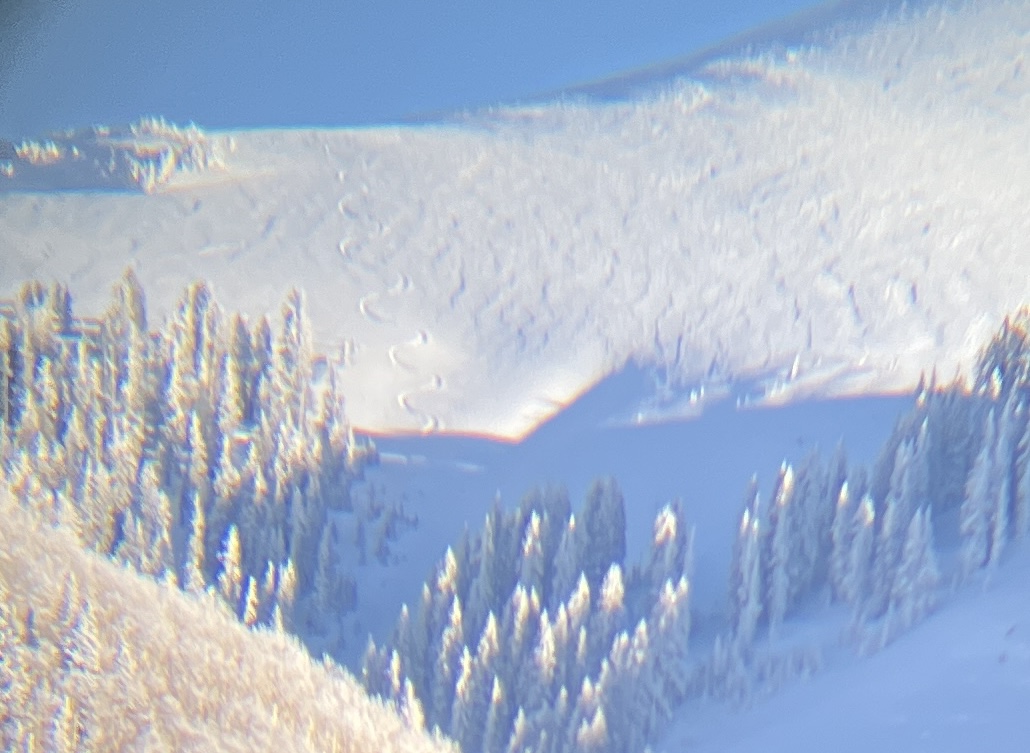Observer Name
Trenbeath
Observation Date
Sunday, February 4, 2024
Avalanche Date
Sunday, February 4, 2024
Region
Moab » Gold Basin » Tukno NE Face
Location Name or Route
Tukno NE Face/Gravel Pit Lanes
Elevation
11,600'
Aspect
Northeast
Slope Angle
Unknown
Trigger
Skier
Trigger: additional info
Remotely Triggered
Avalanche Type
Hard Slab
Avalanche Problem
Persistent Weak Layer
Weak Layer
Facets
Depth
6'
Width
1,000'
Vertical
1,500'
Snow Profile Comments
The snowpack this season has been characterized by a weak, faceted base that formed during a dry early season. Two primary faceted layers exist, one that formed in November, and one that formed in late December. 50"-60" of snow in January built a slab over top. From about January 10-20, collapsing of the snowpack was widespread, but then things began to settle down. Extended column tests performed later in the month on northeast through west aspects produced scores between ECTP25-30, or no results at all (ECTPX). The avalanche danger was dropped to Moderate on January 30 after nearly three weeks in the Considerable range. Snow began to fall again on Feb 1, when 5" of snow fell overnight. The danger was raised to Considerable, and an additional 6" of snow fell with a total SWE of 1.4" in 36 hours. Winds through the period were light to moderate from SW-W-NW. This produced a fair amount of natural activity on NE-N-W.
The pit profile below was made on a similar aspect at a slightly lower elevation, and in a more sheltered location on January 26. An extended column test produced results of ECTP30 on top of the November faceted layer.

Comments
My party happened upon this large avalanche (R3 D3) on the NE face of Mount Tukno at about 12:30 p.m. On our way in, we had observed natural activity on other slopes that had likely run during the storm event on Friday, Feb 2, but this debris appeared to be fairly recent so we did a signal search with no results. We could not observe any tracks in, but lighting was poor and part of the starting zone was obscured, so I contacted the commander of the Grand County Winter Rescue Team around 1:30 p.m. and requested a flyover to confirm no one was involved. The avalanche actually occurred in San Juan County, so after receiving the go-ahead from them, he did a flyover with Classic Helicopters. He noted tracks from a solo skier on the opposite side of the ridge and concluded that this person remotely triggered the avalanche. This seems likely considering how fresh the debris was, and how there were no current weather events to cause such an avalanche. The scene was cleared around 3:00 p.m.
Tracks in the photos below are located on the opposite of the ridge where the slide occured. Skier likely triggered the avalanche from the ridge top.


Coordinates



